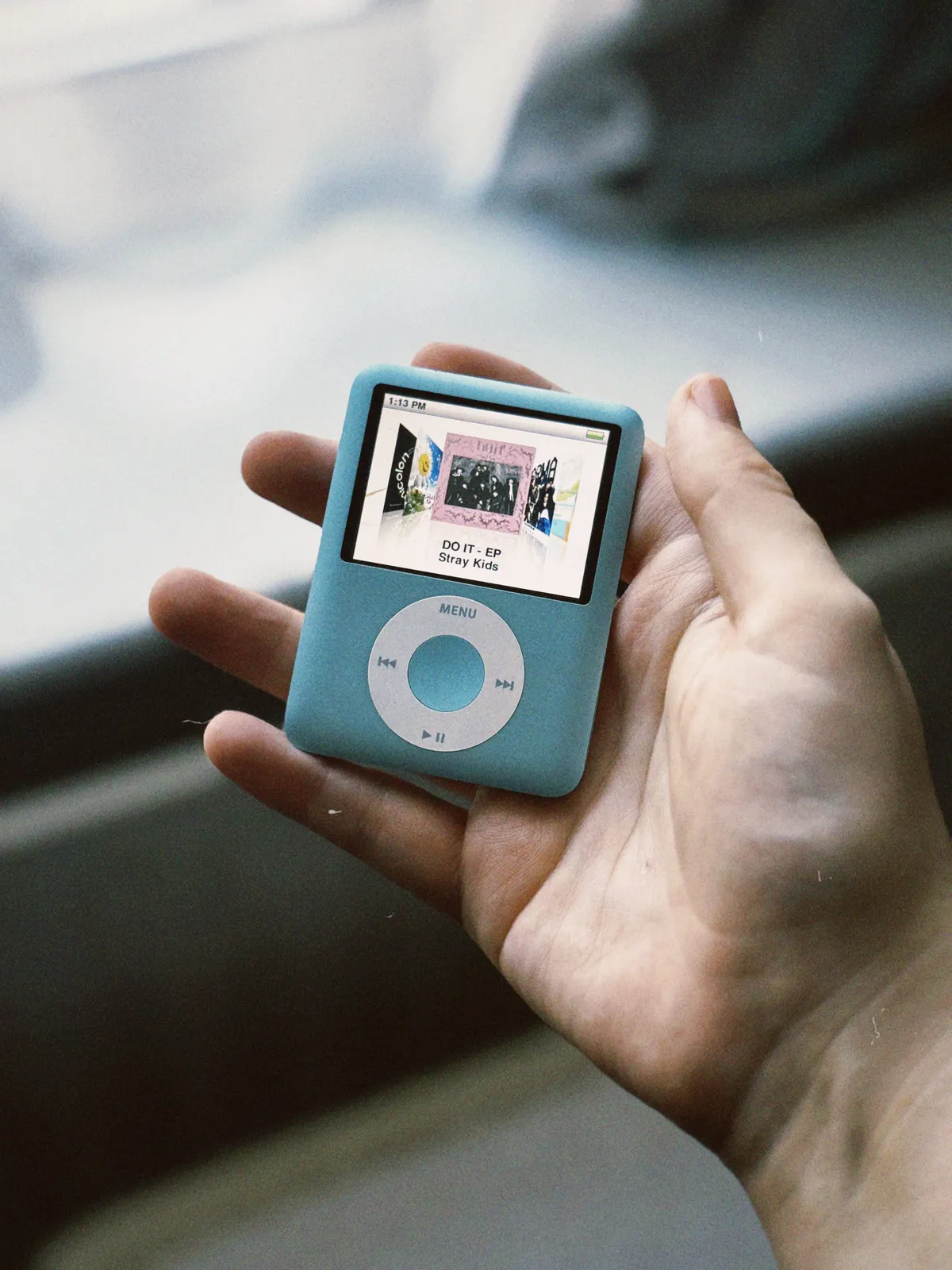2026-01-08 02:06:00
This morning I read this piece in the New Yorker about the 23 year old Youtuber Nick Shirley who went viral a few days ago after posting a video in which he visited a variety of daycare centres alleged to have committed fraud. The tone of the NY piece is understandably defeatist, if you go to the video there are thousands of comments praising it, commenting on how it's the future of journalism and how we should be applauding this young man for breaking this major story. Of course, the story had been broken and many of the claims are outright false, there are barely any sources, there are ai generated images spliced in and the whole thing is fairly obvious ragebait.
The thing is, when searching for answers on this topic, which admittedly is a complex one, you can't trust anything on Reddit or god forbid any other social media, there are obvious bad actors everywhere (on both sides!). What stuck out for me is the sense of confusion and lack of trust I had on any source in regards to this story wasn't a new one, it's something I've had been feeling for years now, and a feeling not just relegated to news.
Here's another strange example, I'm into my photography. I take a lot of pictures and I always have, I also love the hardware part of the hobby. I understand that gear only gets you so far, but I'm interested in both old and new digital cameras in the way old men who stand with their hands behind their backs peering into construction sites are - I just want to know what's going on. There are a few Youtube channels I'll go on to use as a sort of newsfeed for camera stuff, comfort watching or I'll occasionally search a model number of one of my cameras to see if I can find anything new about it. What I've noticed is that camera youtubers, like all youtubers, are trapped by the algorithm. This was made blazingly obvious to me when I noticed that so many of them have a video that looks a lot like this.

To be clear, each of these videos is nonsense, the 'film' look these guys talk about is always super vague, in a way that fits with the images that whatever camera these guys are talking about produces. To get the 'film' look with a digital camera, turn up the iso, spam the flash and learn the basics of color grading and the tone curve. These things take time to learn, and well, don't make for very fun videos to watch. The problem with clickbait-y videos like this on these channels is that they erode trust, how am I supposed to take anything these people say seriously now when I know they've just hopped on a silly little trend for the sole purpose of attracting eyeballs to make number go up?
This gets me to my main point. Here on bear, and on the indieweb in general, we don't really have this problem. People post mostly for themselves, and yes there are people trying to gain large followings, but they aren't playing to an algorithm that values attention and engagement over everything, they're trying to get there by offering something unique to their readers. When I browse the discover and the new sections my mind doesn't go to that doubting, cynical state straight away. Instead, I read posts. Either I have no idea about what I'm reading, in which case I get to learn something new, or someone is posting about something they're incredibly passionate about, in which case, great I love that too! In both cases I know that the post was written for them first - I'm just a bystander, watching with my hands behind my back, before moving on to the next one.
2026-01-07 21:31:00
My new old iPod Nano arrived today in the exact colour I always wanted as a kid, and now it's mine.

I wish someone had a camera angled at me to capture the massive smile on my face as I plugged in my wired earphones and pressed play.
I'd say this is £35 well spent.
Now I can listen to all of my k-pop albums without an internet connection, just like god intended.
2026-01-07 05:15:35
Ahoy there!
So, for a while I've started to become more detached and avoidant of labels. Not in the emotionally-unavailable-what-are-we-question-to-your-crush kind of way. I mean self identification and needing to reduce oneself to a series of labels.
I have a friend who is trans and explained that she's Demisexual, or as she rephrased shortly thereafter "bisexual with extra steps". She later started to lament about how a lot of people in queer spaces have this sort of obsession with "identifying" as something in an attempt to try to fit in, when it often does the exact opposite.
I think sometimes to that video my friend Suliman posted of a tiktok of someone who is gender non-conforming, giving a laundry list of their neopronouns as well as other identities such as "temporarily able-bodied and cat parent in mental health recovery". We got a good chuckle out of it, but I think it brings to light the almost absurd lengths we go to put labels on ourselves.
I sympathize with wanting to find common ground with people, if you're someone with ADHD it makes sense you'd want to find other people who are ADHD. But when you start trying to package yourself into these hyper-niche boxes just to be "not like them", it gets a bit weird more often than not.
I find we are better off being overly elaborate in our language. For example, if you ask me about my sexual orientation, I'll probably just shorthand it to "straight". In reality, if you asked me to specify my type, I'd say vast majority women, but femboys are on the table too. You might think "that actually makes you Bi" or "that actually makes you heteroflexible". I don't care, it's largely irrelevant, I'm happily married to a cis woman and never been romantically involved with someone of the same gender or sex-at-birth. It becomes pointless to a certain extent and a waste of energy.
Look if you wanna call me something else, that's fine, but I'm not gonna waste the energy trying to exactly determine what category I can get stuffed into. I'm certainly not going to be emphatic about any of it either. I'm not gonna argue with you over it to defend a certain identity.
I feel like labels once they get too specific end up leading to more fracturing.
For example, retro gamer can help you find other people who play older games. But if you "identify" as a "Semi-Nintendo 3rd Generation Retro Gamer" I'm gonna look at you like you just grew a 5th head.
Another example, left-wing spaces particularly online, you get the anarchists arguing with the Marxist-Leninist arguing with the Maoists arguing with the Democratic Socialists. At a certain point, you just gotta say "fuck the label, lets overthrow the ruling class and figure out the petty politics afterwards".
We begin to focus less on where we align and pushing forward because we are too busy arguing theory and semantics.
Which speaking of semantics, that's what it seems a lot of labels are. Just nitpicking semantics. At a certain point you gotta ask yourself what difference does it make? What difference does it make if I'm a "girl dad" or a "boy dad", I'm just a fucking dad. If you find you can ONLY relate to people with the exact label as you, that is a problem of YOU and your inability to talk past superficialities. If your entire personality can neatly fit in a post-it note, that makes you less interesting of a person in my book.
Religious sects are like this too. At some point all Christian sects are just some variation of Protestant.
To a point, all a label does is detract from getting to know the person. Part of me wonders if all this fixation on labels comes from social media. You only got X number of characters to put in your bio, better make 'em count.
It's kinda the same irk I have with calling blue a "boy's color" or pink a "girl's color". It just feels like nonsense to win some kind of purity Olympics and enforcing in-group/out-groups within in-groups/out-groups.
It can also have the impact that people don't understand the label to begin with and thus you have to further clarify anyway. An anti-Zionist to one person is going to look different to another depending on what definitions each person is working under. One might just think you are an antisemite because of the context of how anti-Zionism and anti-Semitism do become intertwined the other might think you are just anti-Israeli government.
You're honestly just better off explaining the verbose and letting the other person define whatever that means in their head.
Idk, I'm just spitting my brain at this point. Feel free to yell at me or say I'm missing/oversimplifying.
Pirate is wearing all-black converse, black pants, "Tummy Hurt" shirt from Cool Shirtz, red flannel
Pirate is feeling tired
Pirate is listening to Subliminal Verses Vol. 3 (Album) by Slipknot
Pirate is playing Bioshock on the Xbox 360
{{ previous_post }} | {{ next_post }}
Reply via email: [email protected]
2026-01-06 21:47:00
I overheard a discussion during breakfast. Actually, a monologue would be a better way to describe it. It just went on and on.
It started with “I’m not judging anyone, but...”.
Then he went on non-stop about how terrible people were. His boss was a psychopath, the ex-wife was a narcissist, his friend was a liar, and so on.
Sometimes it feels like being unhappy makes people happy, in a false kind of way. Like they derive their sense of identity from being “the unlucky one”. As if “bad things always happen to me” is their personality, or at least a big part of it.
They manage to find faults in every person and problems in every situation. They have to, to stay alive. No problem, no persona.
On the other hand, maybe this person really was one unlucky dude. Who am I to judge.
2026-01-06 19:00:00

熟悉我的朋友应该也知道,我平日里除了喜欢探索美食,还喜欢写点美食点评,一来二去,我的大众点评和高德地图的等级就成了顶级。
今天不是要拿这两个互联网服务开刀抨击,而是重点要吐槽高德地图这两年来的迷之运营策略。
为什么不吐槽大众点评,那是因为我觉得大众点评的运营策略就算有千般错,那在夸张的高德地图面前都是弟弟。
翻翻旧账,恰好在一年之前(严格意义上讲还有 3 天刚满一年),高德推出了「高德达人」这个对于内容创作者的定级制度的最高等级「Lv.8」,在此之前的一年时间里,「高德达人」作为高德平台自己对于内容创作者的评级,一直是 Lv.1 - Lv.7。我当时也写过一篇文章 《从高德达人升级规则 看互联网大厂的用户运营策略》,来吐槽这件事情。我在文章主要表达了,这一变动,属于规则的「朝令夕改」和额外要求,会让长期贡献的用户感到不公平及被「套路」。并且呼吁用户应理性看待等级机制,避免被平台规则过度捆绑,同时建议平台在运营目标与用户体验之间寻找平衡。
谁能想到,最近,高德地图的运营策略又变了。推出了一个全新的「扫街榜真探」头衔,并从「见习真探」开始一直到「黑钻侦探」一共列了 6 个等级。
看到这里,你可能一头雾水,让我来从头捋一下高德地图的等级制度。
早在几年前,高德也不知道为什么基本上不重视 App 中的内容,这里的内容指的是用户创作的内容,圈内人习惯叫它 UGC,翻译成人话讲就是用户使用你的服务,可以让他们在你的平台上留痕,留下什么呢?可以留下对于地图上某个坐标的评论,也就是说高德地图中很多地点,对于用户而言有各种意义,它们或许是商店、饭店,或许是景点、医院、停车场。每天这么多人使用地图来导航,对于这些目的地,会有很多有价值的信息。在很长一段时间里,高德地图官方没有引导用户进行任何内容的创作。
之后高德地图从账号体系出发,引入了一套等级制度,这个等级非常基础,就是靠你每天使用高德地图的行为累加分数,有点像之前 QQ 挂机升级。由于高频用户每天都在使用这个地图做导航,再加上这个等级没有很好的去做策略和运营,导致像我这种高频导航用户,一度等级升级到了 60 多级甚至 80 多级。
当然,那时候不会把这个等级当回事儿。直到有一年,应该是近三四年的时间,高德地图官方反应过来了,原来我们一直手握这么多优质流量,我们早干嘛去了,我们干脆学大众点评和美团,让用户来写点评呀。所以,新的对于创作者的等级制度诞生了,就是上文提到的「高德达人」。有很长一段时间,账号的等级制度是和「高德达人」这个创作者等级并存的。
直到了快要推出「高德达人」Lv.8 的节骨眼,原来的账号等级被隐藏,再也找不到了。官方没有对此有过声明。

▲ 规则说明字真多,好了不起嗷
就在「高德达人」Lv.8 推出的半年之后,「高德扫街榜」这个榜单能力开始被广泛宣传,我在当时也写过相应的分析《高德扫街榜真的能做起来吗?》。这篇文章大家如果没看过,可以去看看,我就不总结里面的观点了,这对于今天的吐槽没有半点帮助。提这个扫街榜,只是为了顺着节奏把时间捋顺。
再就到了现在,高德推出新的,官方命名为「扫街榜真探」的头衔,仔细看规则不难发现,这个规则也是和写目的地评论挂钩的。然而,「高德达人」这个创作者等级还在,并且「扫街榜真探」只能通过一个内测的入口前往,在 App 内并找不到任何明显的入口。结合高德地图官方的「前科」我不难猜出,「扫街榜真探」有朝一日会官宣并平替掉「高德达人」。
说到「平替」,我觉得用这个词简直抬举了官方。为什么呢?因为这个真探其实推出有几个月时间了,当初推出并不是一个等级制度,而是以勋章奖励来出现的,我直接冲到了当时的最高级「黑金真探」,然而时隔几个月,高德就把我这个曾经在「真探」中的最高级,定级成了目前新推出「扫街榜真探」里的第 4 档位「黑金侦探」,而在我之上,有「钻石真探」和「黑钻真探」两个等级。
如果说只是单纯往上加了两个等级也就还好,但是仔细看规则,不难发现,升这两个等级所需要的成长值居然分别需要到 4550 分和 9050 分,而我现在才 1950 分。写一条评价,只有 15 分,也就是说我如果要升级到最高级,还需要写 474 条优质评论。
这哪里是在做用户运营?这分明是在抓苦力。我突然觉得这种不断移动的终点线很乏味。一个平台如果只想着如何榨干老用户的最后一丝创作热情,而不想着如何平衡体验,那这种等级不要也罢。 看着那个还需要 474 条评价才能填满的进度条,我只想对自己说:要是再给高德地图贡献哪怕一个字的内容,我就是狗。
2026-01-06 16:00:00
The more I read blogs, the more I feel my thoughts are similar to others.
As I click on the links in the discovery page and on other webrings, people write about their lack of focus, hardships and feeling alone. Society has always been the same but now it is in our face 24/7 due to social media.
I don't want to write another doom and gloom post because there are plenty out there. We need to focus on the positive and remember there are people out there going through worse than ourselves. The world has much good to offer but it rarely makes the news if you know what I mean.
Writing blog posts and journalling help us get through the thoughts and feelings. We are all on this small planet doing our best at the end of the day. This is our journey of life, good or bad, these are the chapters of our book. Remember, chapters end and new ones begin. Any day can be a fresh start and don't wait for New Years to experience it.